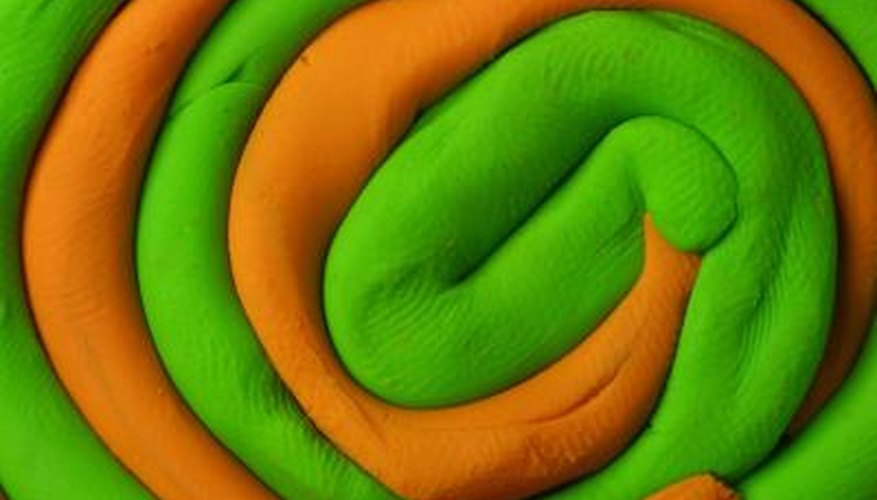Making craft projects with clay offers unlimited possibilities for creativity. Adding things to the clay adds another dimension and texture to your finished product. There are varieties of ways to adhere things to clay. The method and product you choose will depend on a few factors, including whether the clay is hardened or not and the material you are trying to stick to it. Choose the method that works best for the items you are attaching to your clay.
Use a white craft glue to stick most substances to air-dry clay or to adhere the air-dry clay to another surface or another piece of air-dry clay.
Brush a thin layer of translucent liquid polymer clay onto raw polymer clay to stick any type of material to the unbaked clay, including gems, paper, yarn, beads, wood or metal. Spread it evenly on the two surfaces you are joining and rub gently with your fingertip to make the liquid clay tacky. Once baked, this will dry to a clear finish and provide a strong hold.
- Making craft projects with clay offers unlimited possibilities for creativity.
- Spread it evenly on the two surfaces you are joining and rub gently with your fingertip to make the liquid clay tacky.
Score the surfaces of unbaked polymer clay with a blade or tines of a fork to adhere two or more pieces together before baking. Then brush both surfaces with a thin layer of translucent liquid polymer clay, rubbing gently with your fingertips until the surfaces are tacky. Bake according to directions for the piece to attain a strong bond between the pieces.
Use a brand of cyanoacrylate instant glue to join baked polymer clay to a non-porous surface. This glue has a narrow tip to dispense a tiny amount of glue and allows access to tight places. Use it to stick baked and hardened polymer clay to metal, wood or glass, and to attach beads or gems to finished clay pieces, holding the pieces in place until the glue dries.
- Score the surfaces of unbaked polymer clay with a blade or tines of a fork to adhere two or more pieces together before baking.
- Use it to stick baked and hardened polymer clay to metal, wood or glass, and to attach beads or gems to finished clay pieces, holding the pieces in place until the glue dries.
Use a thicker silicone glue to stick metal or glass to baked and hardened polymer clay. This glue dries quickly and provides a strong bond. It has a strong odour and should be used in a well-ventilated area.
Apply a speciality PVA, or polyvinyl acetate glue, to adhere anything to clay that you are using outdoors. PVA glue is acid free, making it good to use in archival work. When it is dry, this glue is waterproof and can withstand temperature changes. This glue sets up quickly, but requires overnight curing for the most permanent bond.
TIP
When preparing polymer clay for baking with the intent of sticking things on when baked, prepare the surface with indentations where the item will be placed. For example, press a bead or stone into a clay pendant before baking to make an indentation that fits the stone. Remove the stone and bake, then glue in place.
WARNING
Use care when working with instant glues, to prevent gluing your skin to itself or other objects quickly.
